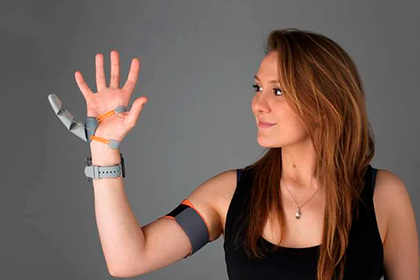Scans conducted by scientists at University College London and the University of Oxford showed that people who use a robotic "Third Thumb" change the brain activity responsible for the movement of the hand. This allows them to learn how to use a manipulator to solve complex tasks, such as stirring coffee in a cup or building a tower of wooden bars, in just a few days. The results of the study are published in the journal Science Robotics.
Participants in the experiment were trained to use an additional robot finger printed on a 3D printer for five days. It has two degrees of freedom and is controlled wirelessly with your thumbs. 20 subjects wore it for six hours a day for five days and performed with it the usual daily activities, as well as special training tasks.
After the training, the participants underwent a series of tests, and some underwent functional brain imaging (fMRI). The training improved the motor skills and coordination of the artificial finger, as well as the dexterity with which the subjects used it, including with their eyes closed. Participants reported that they felt the robot as part of their own body, and did not even make much cognitive effort to control it. This was confirmed by the scan results, which showed a change in neural activity in the sensorimotor region of the cerebral cortex.
During fMRI, the subjects moved each of their fingers, except for the artificial one (for safety reasons, it was removed before the scan), after which the brain activity was compared with the activity when moving the fingers on the hand that did not wear the "Third Thumb". The representation of the fingers in the corresponding area of the somatosensory cortex became slightly less clear, that is, the brain began to adapt to the use of an additional finger. This is similar to what happens in experienced pianists, who, due to constant training, the neural activity that reflects the movement of individual fingers becomes less distinguishable.
As the authors write, changes in the brain are crucial for the successful implementation of augmentation technologies, when the human body is supplemented with robotic devices that replace or complement the limbs.
Alexander Enikeev

